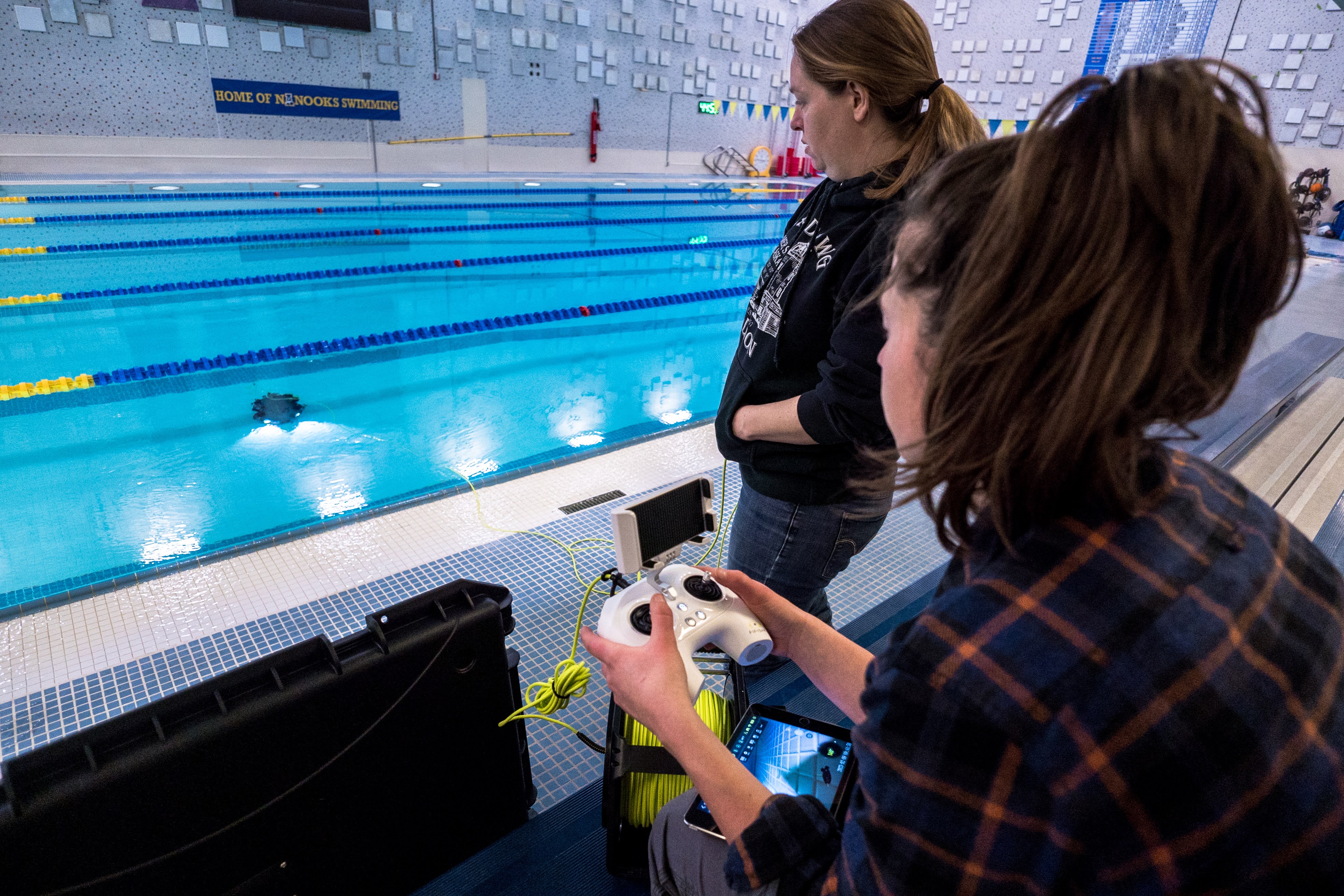ACEP Expands Research Capabilities with New Underwater ROV Technology

ACEP’s Alaska Hydrokinetic Energy Research Center recently acquired a new underwater remotely operated vehicle, which will enable researchers to explore underwater environments like never before in a cost-effective and efficient way.
The Qysea Fifish V6 Expert ROV can efficiently carry out underwater missions while an operator drives it safely from shore or aboard a vessel. The ROV is controlled remotely using a smartphone application.
With ACEP’s expansive energy research and testing in marine and river environments, researchers see a lot of benefits to having this technology in their quiver of tools. Researchers hope to use the ROV to detect seafloor anomalies and to help validate models used in characterizing seafloor topography and substrate type. The technology can also help locate and retrieve other equipment in deep water.
Sitting poolside during inaugural testing at the University of Alaska Fairbanks Patty Center pool, ACEP researchers Noelle Helder and Stephanie Fisher appreciated all the possible uses.
“With observations that we can make using ROV technology, we can help better train and inform our current models that we are developing in ways that we haven’t been able to do before,” Helder said. “We can look at what a model predicts to be true and then actually travel deep below the water’s surface, take a photo of the area, collect a sediment sample and validate predictions without ever getting our feet wet.”
The ROV will likely be deployed during the 2023 field season for ACEP’s coastal mapping, Icy Bay and Tanana River Test Site research efforts.
For more information on the ROV or hydrokinetic research at ACEP, please contact Stephanie Fisher at sjump@alaska.edu.


